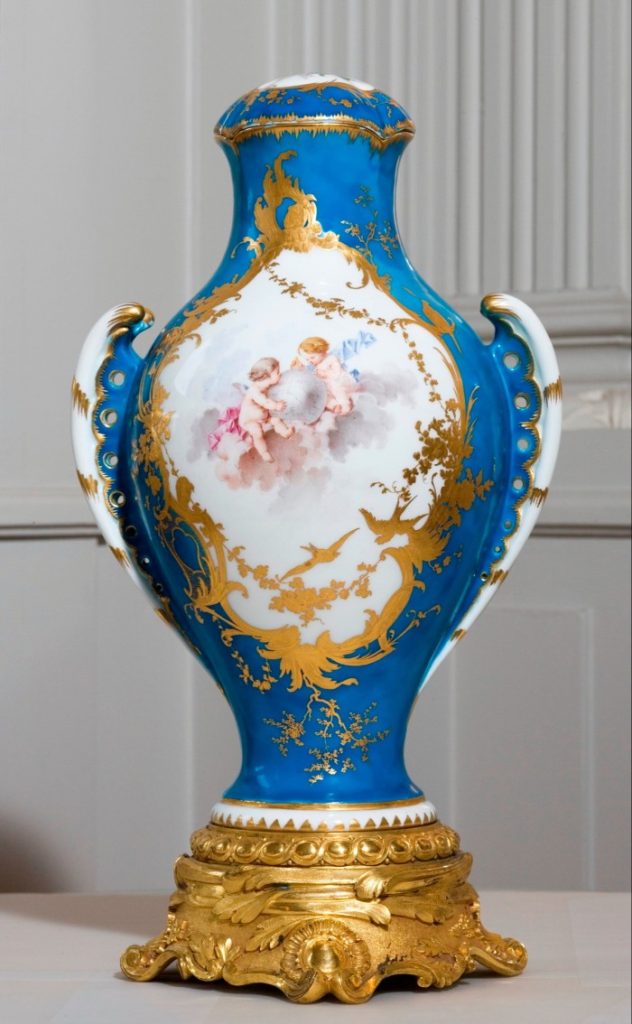‘The beginning of the rebirth’

Unlock the Editor’s Digest for free
Roula Khalaf, Editor of the FT, selects her favourite stories in this weekly newsletter.
France’s flagship art and antiques fair has a chequered recent past. At one time the most glamorous fair in the world and an event of real cultural significance, the Biennale des Antiquaires has faced changing tastes, dipping attendance and a high-profile forgery scandal that rocked the French furniture trade. Reinvented as La Biennale, it merged with a younger initiative, Fine Arts Paris, in 2022, changing its name to FAB Paris the following year.
The event’s 100 or so exhibitors will convene this year under the great glass dome of the newly renovated Grand Palais (November 22-27). This return to the Biennale’s spectacular Art Nouveau home is, according to fair president Louis de Bayser, “the beginning of the rebirth”.
Unlike the extravaganzas staged in the 1980s and ’90s, the focus now, he maintains, is on the dealers and their objects rather than the mise en scène. At the same time, it is looking to the future and the next generation of dealers and, hopefully, also inspiring a new generation of collectors.
The two are not unrelated. “New dealers bring their own taste and a fresh perspective on handling works of art,” he explains. “Sometimes they bring collectors of their own generation.” In November, five emerging gallerists will contribute to a dedicated stand decorated by Victor Bonnivard, a young interior architect interested in combining the modern with the historical. Prices here will be under €25,000.
De Bayser describes the displays — and the fair itself — as an “invitation to become a collector”. Its two loan displays are aspirational as well as inspirational, and also dramatically contrasting. One represents — literally — the so-called “goût Rothschild” tradition of collecting the grandest of 17th- and 18th-century French furniture, boiserie, paintings, porcelain, tapestries and carpets.

It will feature 50 pieces from the vast and little-known collection amassed by the heiress Béatrice de Rothschild (1864-1934). Between 1907 and 1912, the Baroness created the magnificent Italianate mansion and gardens now known as the Villa Ephrussi de Rothschild, at Saint-Jean-Cap-Ferrat on the French Riviera. She bequeathed the villa and some 5,000 works of art from her numerous residences to the Académie des Beaux-Arts, including one of the most important collections of porcelain in France.
“Béatrice was an important figure in the art market during the first decade of the 20th century,” explains Oriane Beaufils, director of collections at the villa, which opened to the public in 1937. “She acquired works from legendary sales and from dealers whose descendants are still working in Paris.”
Despite her interest in the ancien régime, the Baroness’s collecting was eclectic, embracing early Italian paintings, Coromandel lacquer screens, and contemporary art. “She represents the crazy branch of Rothschild taste,” Beaufils enthuses. Among the loans there will be a 14th-century Sienese panel by Bartolo di Fredi, a Vincennes porcelain vase made for Madame de Pompadour and a 1904 Renoir — all set in an evocation of the villa’s opulent interiors by the acclaimed designer and collector Jacques Garcia.
The diversity and depth of Béatrice de Rothschild’s eye is relevant to a fair that offers everything from antiquities — among them an ancient Egyptian burial mask that once belonged to Coco Chanel — to Old Masters and modern art and design, by way of Asian and tribal art. Her eclecticism will also be echoed in the second display: a monumental, almost whimsical, “cabinet of curiosities” greeting visitors at the fair entrance.

Here, the architect Sylvie Zerat has conceived an immersive installation featuring two 6.7-metre-long walls pierced by apertures of different scales and shapes. Inside will be 400 objects — from artists’ palettes and plaster casts to globes and reliquaries. Most are drawn from the collection of the illustrator, designer and owner of La Boutique, Marin Montagut. He describes them as “humble tokens of everyday life and folk art” found in flea markets and artisanal workshops. It is proof that collecting is not solely the preserve of Rockefellers or Rothschilds.
There is, however, ample opportunity to follow the Rothschilds’ lead. At Galerie Steinitz, a gilded bronze clock with painted glass panels by François Vion was reputedly a gift from Marie Antoinette and latterly in the collection of Baron Edouard de Rothschild (€650,000), while a set of three 18th-century, ormolu-mounted Chinese “clair de lune” celadon porcelain vases once belonged to Baron Guy de Rothschild (€1.2m). The Baron Alphonse is represented by a Japanese lacquer secretaire by Adam Weisweiler circa 1790-95, offered by Pascal Izarn.

De Bayser notes that the market for antique furniture remains a little subdued unless the pieces are of the very best quality or boast a sparkling provenance. Those looking for more contemporary inspiration, meanwhile, might find it at newcomers Maison Rapin, whose offering will include the likes of a coral and rock crystal chandelier made around 1980 by the late goldsmith and jeweller Robert Goossens.
“It takes time to build a new fair,” he concludes. Not every dealer invited to participate took up the invitation, and the proportion of foreign dealers is well below the 45 per cent of the Biennale’s heyday. Selection and vetting are key, he believes, as is the element of surprise. “We hope visitors will return year after year because they will never know what to expect.”
November 22-27, fabparis.com
#beginning #rebirth





